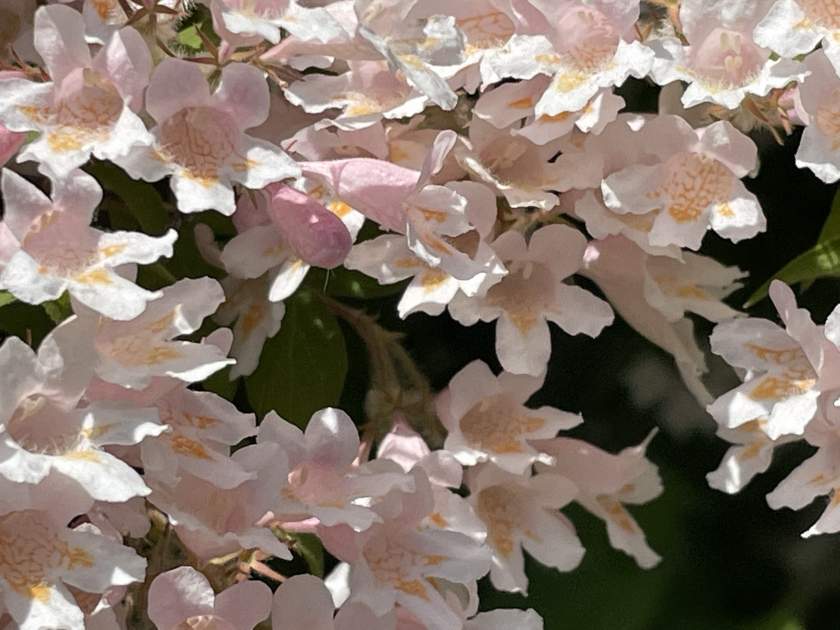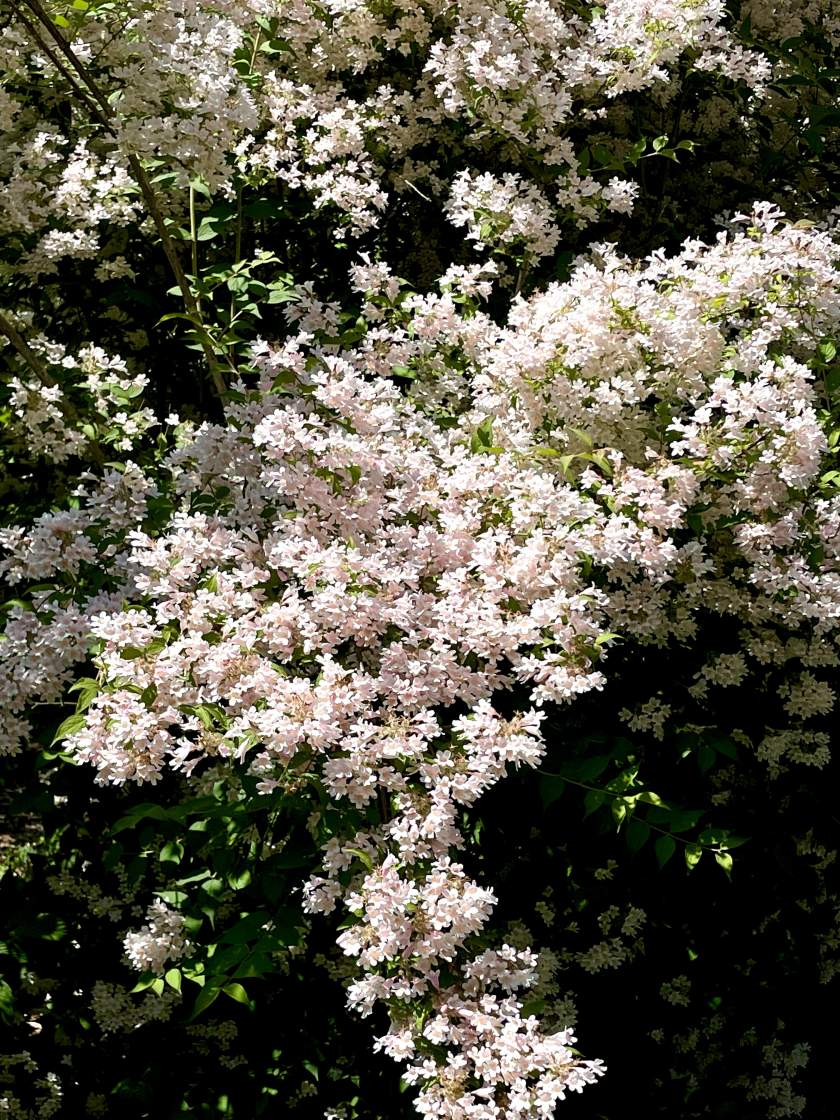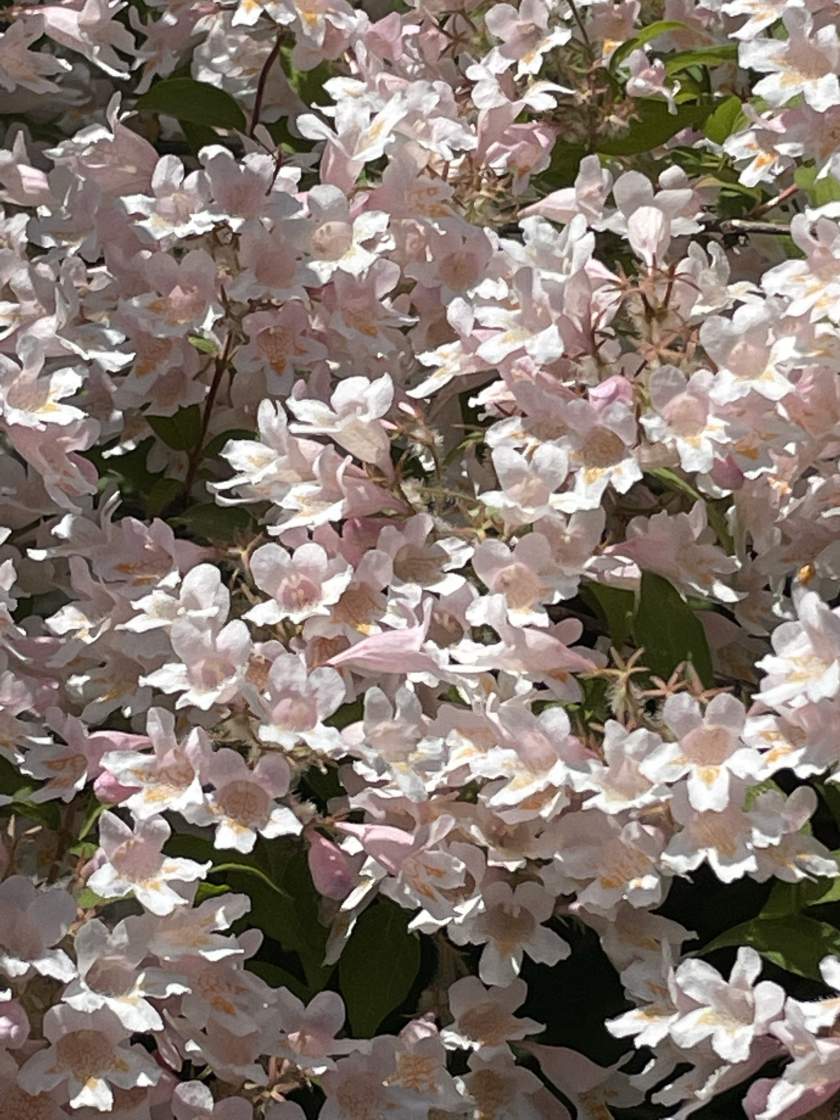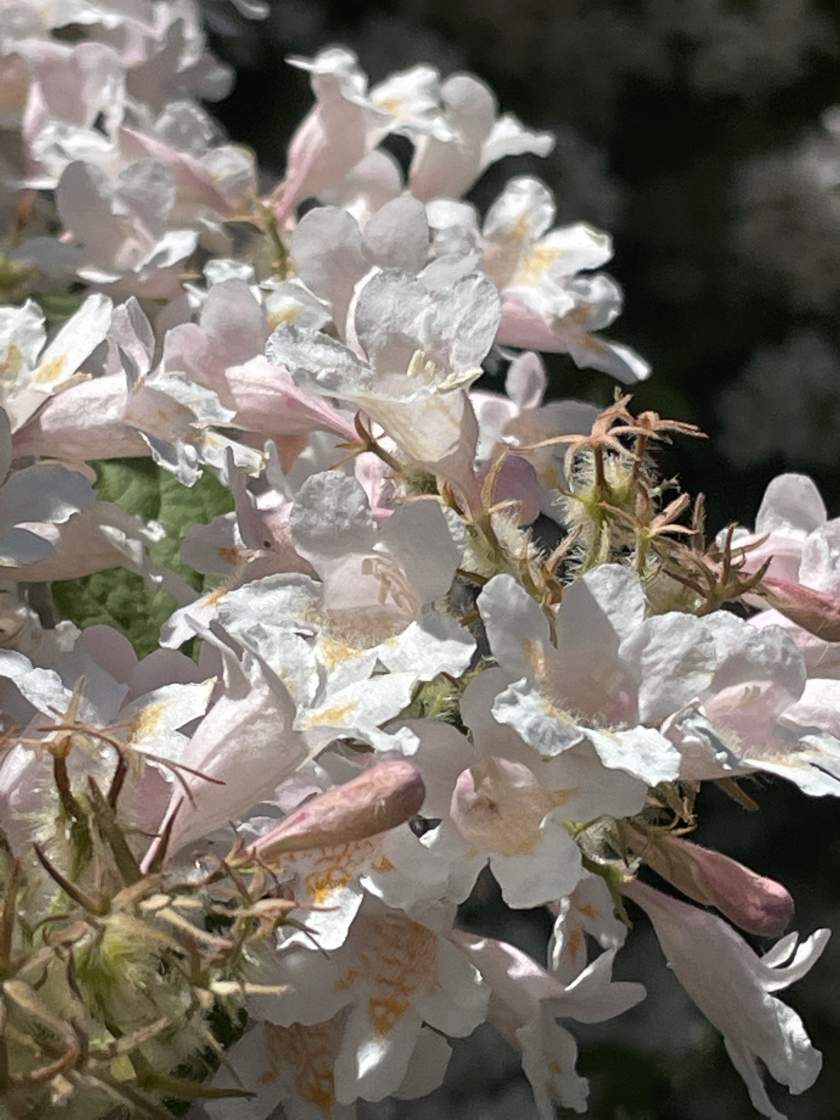Kolkwitzia amabilis ‘Pink Cloud’: A Stunning Deciduous Shrub with Pink Trumpet-Shaped Flowers
Kolkwitzia amabilis ‘Pink Cloud’, also known as Beautybush, is a captivating deciduous shrub that adds a touch of elegance to any garden. With its abundant clusters of trumpet-shaped pink flowers that resemble fluffy clouds, this cultivar is a showstopper in the spring. The shrub features a vase-shaped growth habit with arching branches and dark green ovate leaves. While it spreads by suckers, it does not become uncontrollable, making it a manageable addition to your landscape.
Family Origin: Kolkwitzia amabilis ‘Pink Cloud’ belongs to the Caprifoliaceae family. It is closely related to Weigela and Diervilla, sharing similar characteristics and growth habits. The cultivar is derived from a cross between K. amabilis and K. dreamland. It was introduced into the trade by nurseryman Ernest J. Wilson in England in 1901.
Characteristics: The leaves of Kolkwitzia amabilis ‘Pink Cloud’ are dark green and ovate in shape, providing an attractive backdrop for its spectacular blooms. The shrub showcases an abundance of bell-shaped pink flowers with yellow throats, forming clusters (corymbs) that can reach up to 3 inches in width. These exquisite blooms create a striking visual display in late April to early May. As a deciduous shrub, Kolkwitzia amabilis ‘Pink Cloud’ also exhibits exfoliating bark on mature stems, adding winter interest to your garden.
Fragrance: While Kolkwitzia amabilis ‘Pink Cloud’ does not possess a strong fragrance, its captivating appearance compensates for the lack of scent. The visual appeal of the pink cloud-like flowers is sure to enchant anyone who encounters this remarkable shrub.
Cultivation of Kolkwitzia amabilis ‘Pink Cloud’:
Sunlight: Kolkwitzia amabilis ‘Pink Cloud’ thrives in full sun but can tolerate partial shade. While it can adapt to less favorable light conditions, it blooms most vibrantly when provided with ample sunlight.
Watering: This cultivar has moderate water needs. It requires regular watering to maintain adequate moisture levels, but be cautious not to overwater, as it may lead to root rot. Ensure the soil is well-drained to prevent waterlogging.
Soil: Kolkwitzia amabilis ‘Pink Cloud’ is not particularly demanding when it comes to soil type. It prefers well-drained soils rich in organic matter. While it can tolerate clay soils, providing a neutral to slightly acidic soil environment is ideal for optimal growth.
Pest and Disease: Kolkwitzia amabilis ‘Pink Cloud’ is generally resistant to pests and diseases. However, like any plant, it may occasionally encounter common issues such as aphids, gray mold, root rot, or powdery mildew. Regular monitoring and maintaining the plant’s health through proper cultural practices can help prevent these problems.
Propagation: Propagation of Kolkwitzia amabilis is commonly done through softwood or semi-hardwood cuttings taken in late spring or early summer. Cuttings should be 4-6 inches long, taken from new growth. After removing the bottom leaves, dip the cut ends in the rooting hormone. Plant the cuttings in a well-draining potting mix, keeping them consistently moist. Place the pot in an area with indirect light and wait for rooting to occur, typically within 4-6 weeks. Once rooted, the cuttings can be transplanted into their permanent location.
Growth Rate: Kolkwitzia amabilis ‘Pink Cloud’ has a moderate growth rate, typically reaching approximately 60 centimeters per year. It begins its stunning flowering display in May, continuing into June. This shrub, native to China, showcases its full beauty during the spring and summer seasons.

Tips on Growing:
- If starting Kolkwitzia amabilis ‘Pink Cloud’ from seeds, begin indoors using a sterile seed starting to mix approximately 8-10 weeks before the last frost date in your area.
- Sow the seeds on the surface of the seed starting mix and lightly water.
- Place the seed tray in a warm location with bright, indirect light.
- Keep the seed starting mix moist but not overly saturated.
- Once the seedlings emerge, thin them, leaving only the strongest seedling in each cell or pot.
- Fertilize the seedlings every other week using a half-strength fertilizer solution.
- When the seedlings reach a height of 6-8 inches, transplant them into individual pots filled with a well-drained potting mix.
- Place the pots in a sunny location and maintain even moisture in the potting mix.
Maintenance: Maintaining Kolkwitzia amabilis ‘Pink Cloud’ is a relatively low effort. Regular pruning is recommended to promote plant health, provide air circulation, maintain a desirable shape, and remove dead or damaged branches. Late winter to early spring is the ideal time for pruning most shrubs, including those that bloom in spring. If necessary, remove approximately one-third of the oldest branches by cutting them at the base of the shrub. Additionally, monitor the shrub for pests, diseases, or any other issues, taking appropriate measures promptly.
Kolkwitzia amabilis ‘Pink Cloud’ is a truly remarkable shrub that offers beauty and charm to any garden or landscape. With its showy pink flowers, attractive foliage, and easy cultivation requirements, it is a delightful addition to consider for those seeking an eye-catching and low-maintenance plant. Enjoy the splendor of ‘Pink Cloud’ as it transforms your outdoor space into a captivating oasis.







